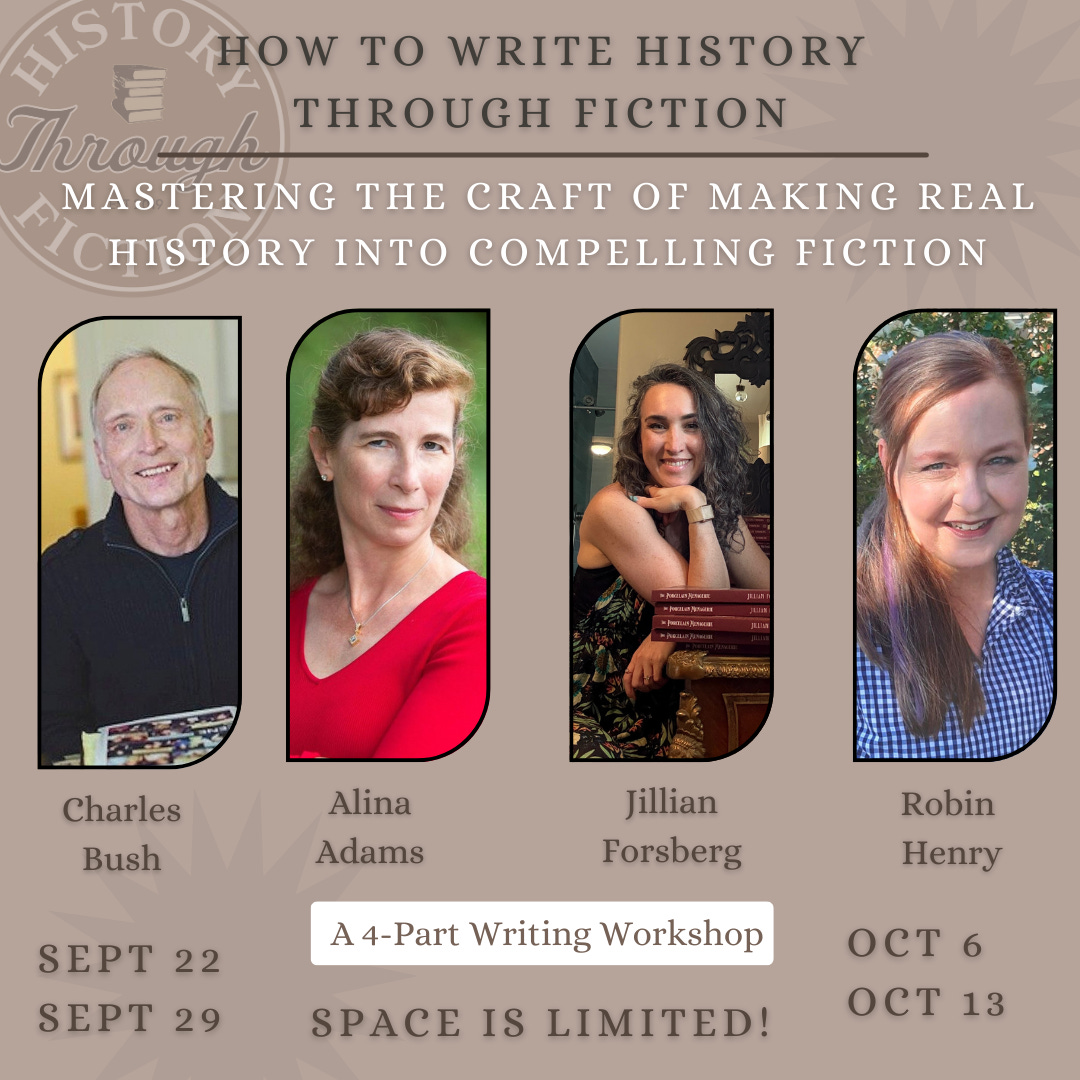I spend a lot of time here talking about the hustle of running a small press—the deadlines, the projects, the everyday work of keeping things moving. What I don’t talk about enough is the craft of storytelling—the foundation of History Through Fiction and the real heart of what I do.
Behind all the business tasks, I’m still immersed in story. I’m editing manuscripts, analyzing submissions, and helping writers strengthen their craft. And History Through Fiction itself was built on a simple idea: to publish the kind of historical fiction I love to write—stories rooted in real history, transparent about their sources and methods.
This past month, I had the chance to reconnect with that side of my work through my annual workshop, How to Write History Through Fiction. Every year I choose three novels from our catalog to show students the craft at work beneath the storytelling. Teaching this workshop reminds me why I fell in love with this business in the first place: the joy of looking closely at the artistry of a novel and articulating what makes it great.
For this year’s class, I’ve built the curriculum around:
Character development in The Boy with the Jade by Charles Bush
History as story in Go On Pretending by Alina Adams
Dual timelines in The Porcelain Menagerie by Jillian Forsberg
I’ve just finished writing the lessons, and I’d like to share a glimpse of what I learned. (There’s only one spot left in the class—if it fills, I’ll start a waitlist and may add another session.)
The Boy with the Jade by Charles Bush
When I began reading, I wasn’t sure where the story was headed—or how I felt about the protagonist. But by the end, Bayou’s transformation floored me. Charles Bush achieves this through careful, layered character development. From Bayou’s fateful birth with a jade in his mouth, through family tragedy, to his encounters with a priest and a monk, Bush shows us both wealth and despair. Step by step, we witness the struggles that shape Bayou’s ultimate revelation, and it lands with remarkable power.
Go On Pretending by Alina Adams
Alina Adams often says she has “no imagination,” that she simply relies on history to tell her stories. After analyzing Go On Pretending, I see what she means. Every scene is rooted in real events—from the Spanish Civil War to the rise of soap operas, the fall of the Soviet Union, and beyond. But this isn’t history as backdrop; it’s history as story. Adams weaves her characters seamlessly into the fabric of real events, creating a narrative that feels both plausible and deeply human. This balance between fact and fiction embodies exactly what History Through Fiction was created to celebrate.
The Porcelain Menagerie by Jillian Forsberg
Jillian Forsberg’s prose is elegant, immersive, and vivid. But what stands out most in The Porcelain Menagerie is her mastery of dual timelines—a notoriously tricky structure. With storylines unfolding just one generation apart, and some characters appearing in both, clarity is key. Forsberg sets the stage brilliantly in the opening chapter, establishing connections early and then weaving them throughout. By the end, the two timelines converge in a climax that feels both inevitable and breathtaking.
From the day I sat down to write my first novel sixteen years ago, to my work now as editor and publisher, I’ve been learning—through trial, failure, success—what makes a story work. At times, craft feels instinctive, but really, it’s the product of years of practice. That’s why taking a step back to study it closely, to name what’s happening on the page, is so refreshing. The lessons are there, and they matter.
I can’t wait to share these insights with our students.
👉 If you’d like to join How to Write History Through Fiction, you can register here.
If registration is full, sign up for the waitlist—if enough people are interested, I’ll open another session.






